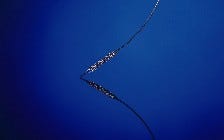A Bioabsorbable Metal Stent: What DREAMS Are Made Of
September 5, 2012
Abbott's much-anticipated Absorb BVS coronary scaffold system is considered a trailblazer in the bioresorbable stent market, boasting U.S. clinical trials underway and a CE Mark in Europe. Yet despite the polymer-based device's prominence in the sector, the Absorb may face some stiff competition down the road from a novel bioresorbable metal stent with big dreams.
|
Biotronik's bioabsorbable metal stent could someday give Abbott's Absorb a run for its money. |
Despite still having quite a ways to go on the path to U.S. introduction, Biotronik's drug-eluting absorbable metal scaffold, or DREAMS system, could just be a contender in the emerging polymer-dominated bioresorbable stent market. Combining the strength and reliability of bare-metal stents with the temporary nature of bioresorbable polymers, the DREAMS device features a stent backbone engineered from the company's proprietary magnesium technology that is coated with a bioaborbable polymer matrix and antiproliferative drug Paclitaxel.
"For coronary scaffolds, tailor-made magnesium alloys provide the best balance between biocompatibility, mechanical properties, and absorption characteristics," according to Biotronik's Web site.
The scaffold system is designed for a gradual degradation process. During the first three months of implantation, the DREAMS device provides controlled drug release while the magnesium alloy begins to slowly degrade. Then, at six months, degradation of the magnesium is complete and polymer absorption continues; the polymer coating completely degrades by month nine, however, and structural disintegration commences.
Currently undergoing a European clinical trial dubbed the Biosolve-I, the DREAMS product was first implanted in a patient in July 2010. One-year results, presented at the EuroPCR Conference in May, revealed a low, 7% rate of target lesion failure with no death or scaffold thrombosis observed; target lesion revascularization rate was 4.7%. "[A] reduction of the 12-month late lumen loss [of 0.52 mm] is likely due to plaque regression and late expansive remodeling," according to Professor Michael Haude, principal investigator in the Biosolve-1 trial. "At 6 months, we have already seen that vasomotion is restored, so the new results verify that the vessels are naturally adapting to accommodate flow. Additionally, we could further validate that the return of natural vessel angulation that we saw at 6 months was maintained also at 12 months. These results suggest a real restoration of the vessel's natural architecture."
"The particularly positive feature of the magnesium scaffold is its nice conformability to the vessel wall. A few months after DREAMS implantation, the artery is able to regain its original shape and physiology. This is the main benefit of the magnesium scaffold over the more rigid polymer-based platforms," Haude added to his remarks on the study.
But will this benefit prove to be advantageous enough to give Biotronik the edge over Abbott? That remains to be seen, and, unfortunately, it probably won't be seen for quite a few years. However, the use of a bioabsorbable magnesium alloy certainly makes the DREAMS device stand out from the polymer-based bioresorbable scaffolds currently in development or undergoing clinical trials. "While years away from availability in the United States, DREAMS appears to be the strongest competitor to Abbott's Absorb BVS bioabsorbable scaffold," notes a recent report released by group purchasing organization Novation. The race is on. --Shana Leonard
You May Also Like



